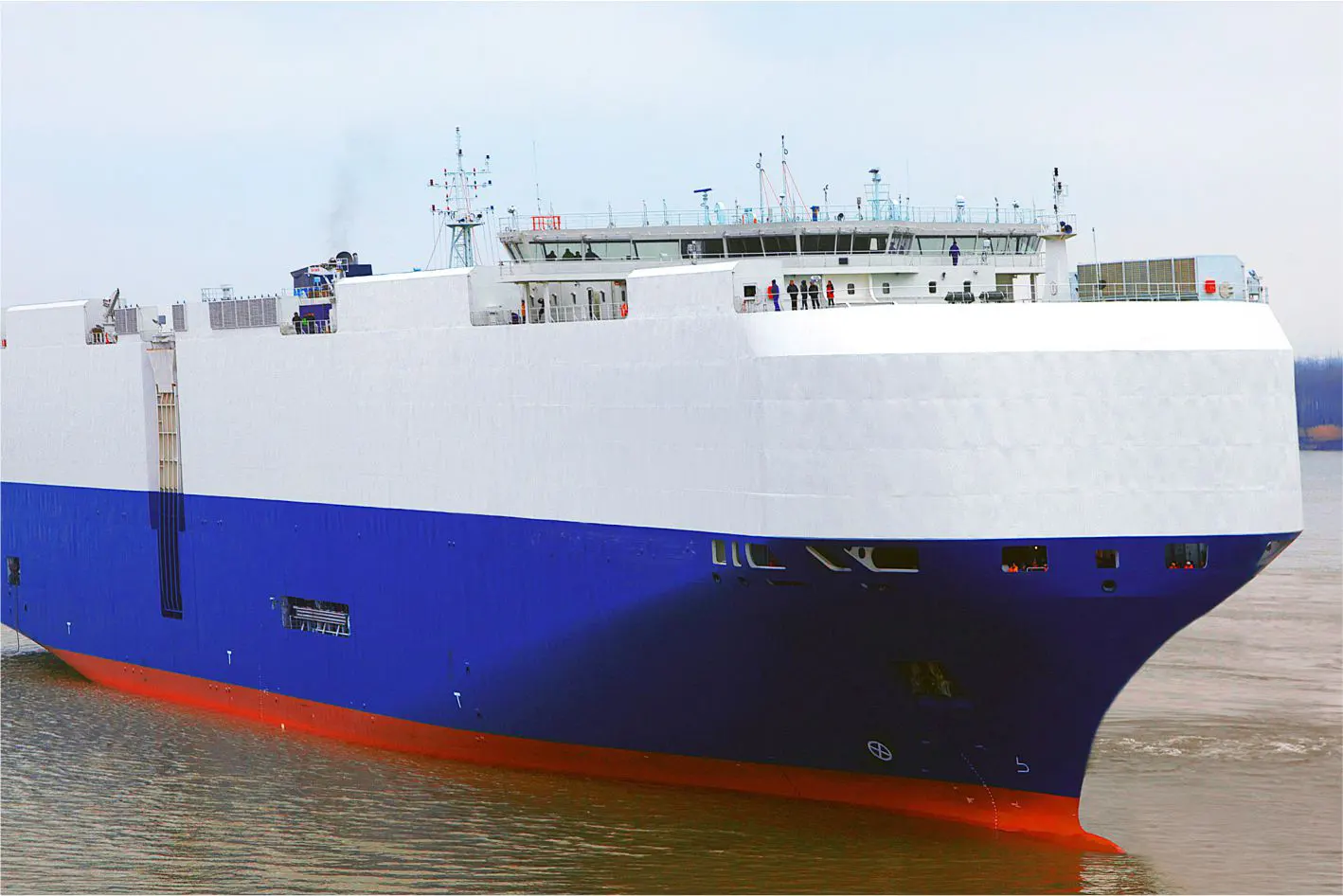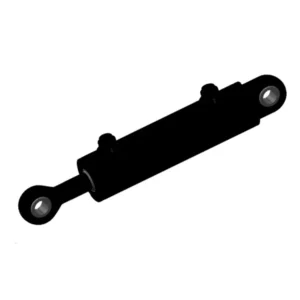Ro-ro Platform Latch Cylinders (mechanical self-locking)
Como um dos fabricantes, fornecedores e exportadores de produtos mecânicos de cilindros hidráulicos, oferecemos cilindros hidráulicos e muitos outros produtos.
Entre em contato conosco para obter detalhes.
Correio eletrônico:sales@hydraulic-cylinders.net
Fabricante, fornecedor e exportador de cilindros hidráulicos.
Ro-ro Platform Latch Cylinders (mechanical self-locking)
Ro-ro platform latch cylinders with mechanical self-locking capabilities are essential components designed to enhance the safety and efficiency of roll-on/roll-off (ro-ro) operations. These innovative hydraulic cylinders provide reliable locking mechanisms to secure the platform during transportation, preventing unwanted movement and ensuring the safe delivery of goods. With their exceptional features and mechanical self-locking mechanism, ro-ro platform latch cylinders are the ultimate solution for companies seeking enhanced security and streamlined logistics.
Ro-ro platform latch cylinders with mechanical self-locking capabilities provide the utmost security and efficiency in ro-ro operations. With their mechanical self-locking mechanism, robust construction, and easy integration, these cylinders ensure safe and streamlined transportation of goods. By following the recommended usage methods and implementing regular maintenance practices, companies can maximize the longevity and performance of these essential components, contributing to enhanced security and smooth logistics operations.
Ro-ro Platform Latch Cylinders (mechanical self-locking) Key Characteristics:
- Mechanical Self-Locking: Ro-ro platform latch cylinders feature an automatic self-locking mechanism that securely locks the platform once engaged. This eliminates the need for external locking devices, reducing complexity and increasing operational efficiency.
- Robust Construction: These cylinders are constructed with high-quality materials to withstand the demanding conditions of ro-ro operations. Their rugged construction ensures durability and longevity, minimizing downtime and maintenance costs.
- Easy Integration: Ro-ro platform latch cylinders are designed for easy integration into existing ro-ro platform systems. They can be seamlessly installed and retrofitted, enabling quick and hassle-free implementation.
- Enhanced Safety: The mechanical self-locking mechanism of these cylinders ensures that the platform remains securely locked during transportation. This feature significantly reduces the risk of accidents, preventing cargo shifts and enhancing overall safety.
Ro-ro Platform Latch Cylinders (mechanical self-locking) Parameter:
| Product Name | Ro-ro Platform Latch Cylinder |
| Features: | Lock the bolt after the springboard or ramp is recovered in place |
| Specification: | Specifications: 80/45*S, 60/32*S,front and rear locking Having DNVGL-type approval With standard size series selection |
| Pressure | 25MPa (stainless steel piston rod) |
| Applications: | Ro-ro Platform |
Having DNVGL type approval
With standard size series selection
(stainless steel piston rod)
Ro-ro Platform Main Operating Cylinder Application:

Usage Method Of Ro-ro Platform Latch Cylinders (mechanical self-locking):
- Installation: Ro-ro Platform Latch Cylinders are installed strategically on the ro-ro platform. Mount the cylinders securely using appropriate brackets and hardware, ensuring proper alignment and clearance for operation.
- Activation: Once the platform is positioned and ready for transport, activate the cylinders’ self-locking mechanism. This can be achieved through manual engagement or automated systems, depending on the specific design and requirements.
- Locking Verification: After engaging the self-locking mechanism, verify that the cylinders are securely locked and holding the platform. Perform visual inspections and functional tests to ensure proper engagement and functionality.
How Are Hydraulic Cylinders Rated?
Hydraulic cylinders are manufactured through a series of processes that involve precision engineering, machining, and assembly. The exact manufacturing process may vary depending on the specific type and size of the hydraulic cylinder, as well as the manufacturer’s techniques and equipment. However, here is a general overview of how hydraulic cylinders are made:
- Design and Engineering: The first step in manufacturing a hydraulic cylinder is the design and engineering phase. Engineers analyze the requirements and specifications of the cylinder, considering factors such as load capacity, pressure ratings, stroke length, and mounting options. Computer-aided design (CAD) software is often used to create detailed 3D models and technical drawings.
- Material Selection: Once the design is finalized, the appropriate materials are selected for constructing the hydraulic cylinder. Common materials used include high-strength steel for the cylinder barrel and piston rod, cast iron or aluminum for end caps, and various seals and O-rings made of elastomers or other suitable materials.
- Cylinder Barrel Production: The cylinder barrel is typically produced through honing. This involves machining the inner surface of a seamless steel tube to achieve the desired smoothness and dimensional accuracy. The honing process creates the precise cylinder bore where the piston will move.
- Piston Rod Production: The piston rod extends from one end of the cylinder and is usually made from a high-strength steel bar. The rod is machined to the required dimensions, including precision grinding of the surface finish, to ensure smooth operation and resistance to wear.
- Machining and Component Fabrication: Various components of the hydraulic cylinder, such as end caps, piston heads, and mounting brackets, are fabricated through machining processes. CNC (Computer Numerical Control) machines are commonly used to accurately shape and drill holes in the components according to the design specifications.
- Surface Treatment: Depending on the application and requirements, certain surfaces of the hydraulic cylinder may undergo additional treatments. These can include processes like heat treatment to improve strength and durability, plating or coating for corrosion resistance, or specialized surface treatments such as hard chrome plating on the piston rod for increased wear resistance.
- Assembly: The hydraulic cylinder is assembled once all the necessary components are fabricated and treated. This involves carefully fitting the cylinder barrel, piston, piston rod, seals, and other parts together. Precise alignment and proper sealing are essential to ensure optimal performance and prevent leaks.
- Testing and Quality Assurance: Before the hydraulic cylinder is ready for distribution, it undergoes rigorous testing to ensure it meets the required standards and specifications. This can include pressure testing, functional testing, and dimensional inspections. Quality assurance procedures are implemented to maintain consistent quality throughout the manufacturing process.
- Packaging and Distribution: The completed hydraulic cylinders are packaged securely to protect them during transportation. They are then distributed to customers or stored in inventory for future use.
Aptidão e capacidade da fábrica:
(1) Montagem
Temos uma plataforma de montagem de pesquisa e desenvolvimento independente de primeira classe. A oficina de produção de cilindros hidráulicos tem quatro linhas de montagem semiautomáticas de cilindros de elevação e uma linha de montagem automática de cilindros de inclinação, com uma capacidade de produção anual projetada de 1 milhão de peças. A oficina de cilindros especiais é equipada com várias especificações de um sistema de montagem de limpeza semiautomática com uma capacidade de produção anual projetada de 200.000 peças e equipada com famosos equipamentos de usinagem CNC, um centro de usinagem, um equipamento especial de processamento de cilindros de alta precisão, uma máquina de solda robotizada, uma máquina de limpeza automática, uma máquina de montagem automática de cilindros e uma linha de produção de pintura automática. O equipamento crítico existente é de mais de 300 conjuntos (conjuntos). A alocação ideal e o uso eficiente dos recursos do equipamento garantem os requisitos de precisão dos produtos e atendem às necessidades de alta qualidade dos produtos.


(2) Usinagem
A oficina de usinagem é equipada com um centro de torneamento de trilho inclinado personalizado, um centro de usinagem, uma máquina de brunimento de alta velocidade, um robô de soldagem e outros equipamentos relacionados, que podem lidar com o processamento de tubos de cilindros com diâmetro interno máximo de 400 mm e comprimento máximo de 6 metros.

(3) Soldagem

(4) Pintura e revestimento
Com linhas de revestimento de tinta à base de água automáticas de cilindros de pequeno e médio porte, para obter carregamento e descarregamento automáticos de robôs e pulverização automática, a capacidade projetada é de 4.000 peças por turno;
Também temos uma linha de produção de tinta semiautomática para cilindros grandes, acionada por uma corrente elétrica, com capacidade de projeto de 60 caixas por turno.


(5) Testes
Temos instalações de inspeção e bancos de teste de primeira classe para garantir que o desempenho do cilindro atenda aos requisitos.

We are one of the best hydraulic cylinder manufacturers. We can offer comprehensive hydraulic cylinders. We also provide corresponding caixas de câmbio agrícolas. Exportamos nossos produtos para clientes em todo o mundo e conquistamos uma boa reputação devido à qualidade superior de nossos produtos e ao serviço pós-venda. Convidamos clientes nacionais e estrangeiros a entrar em contato conosco para negociar negócios, trocar informações e cooperar conosco!
Faça um tour pela nossa fábrica de RV:
Faça um tour pela nossa fábrica de RV com o seguinte
Cilindro hidráulico Aplicação:



